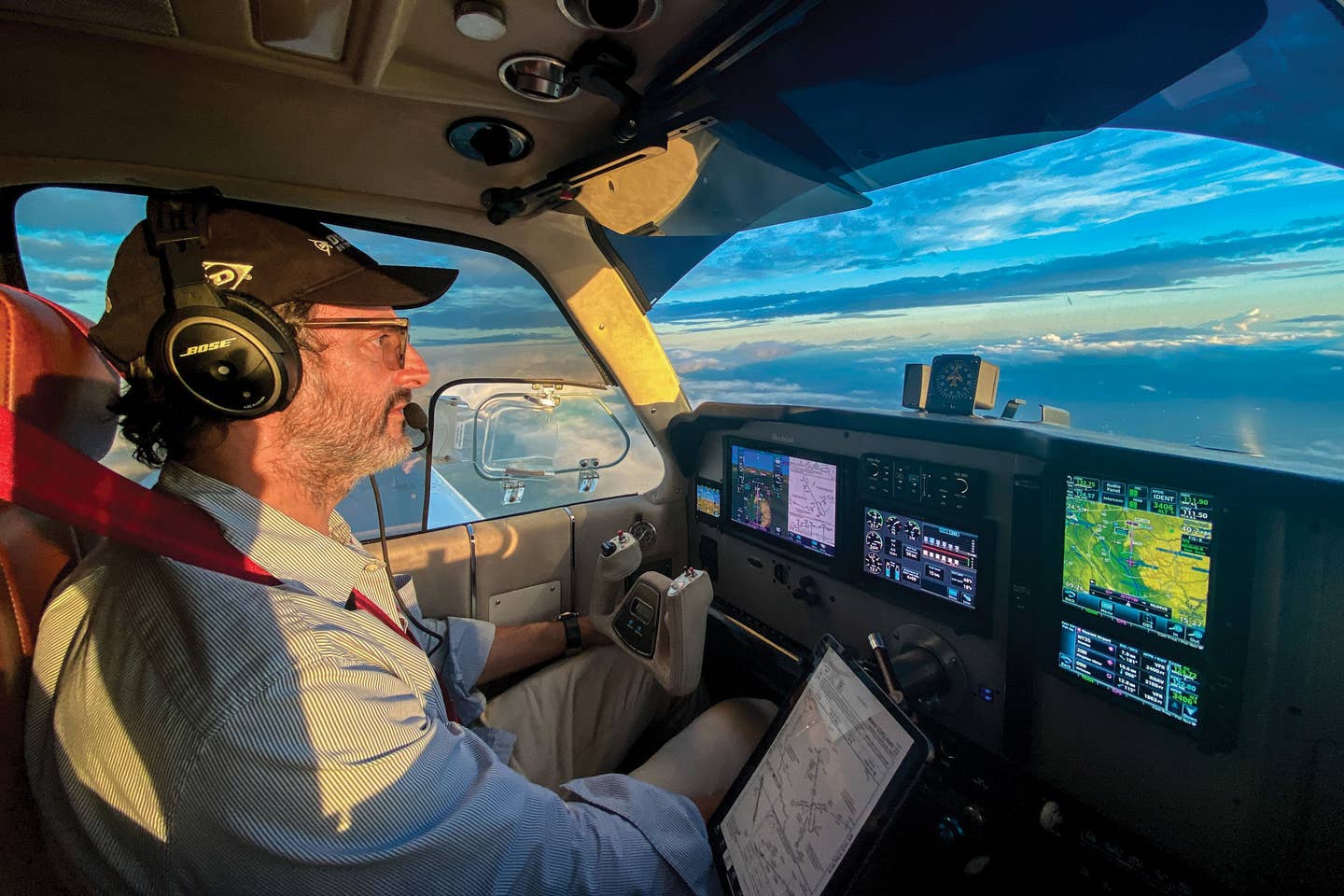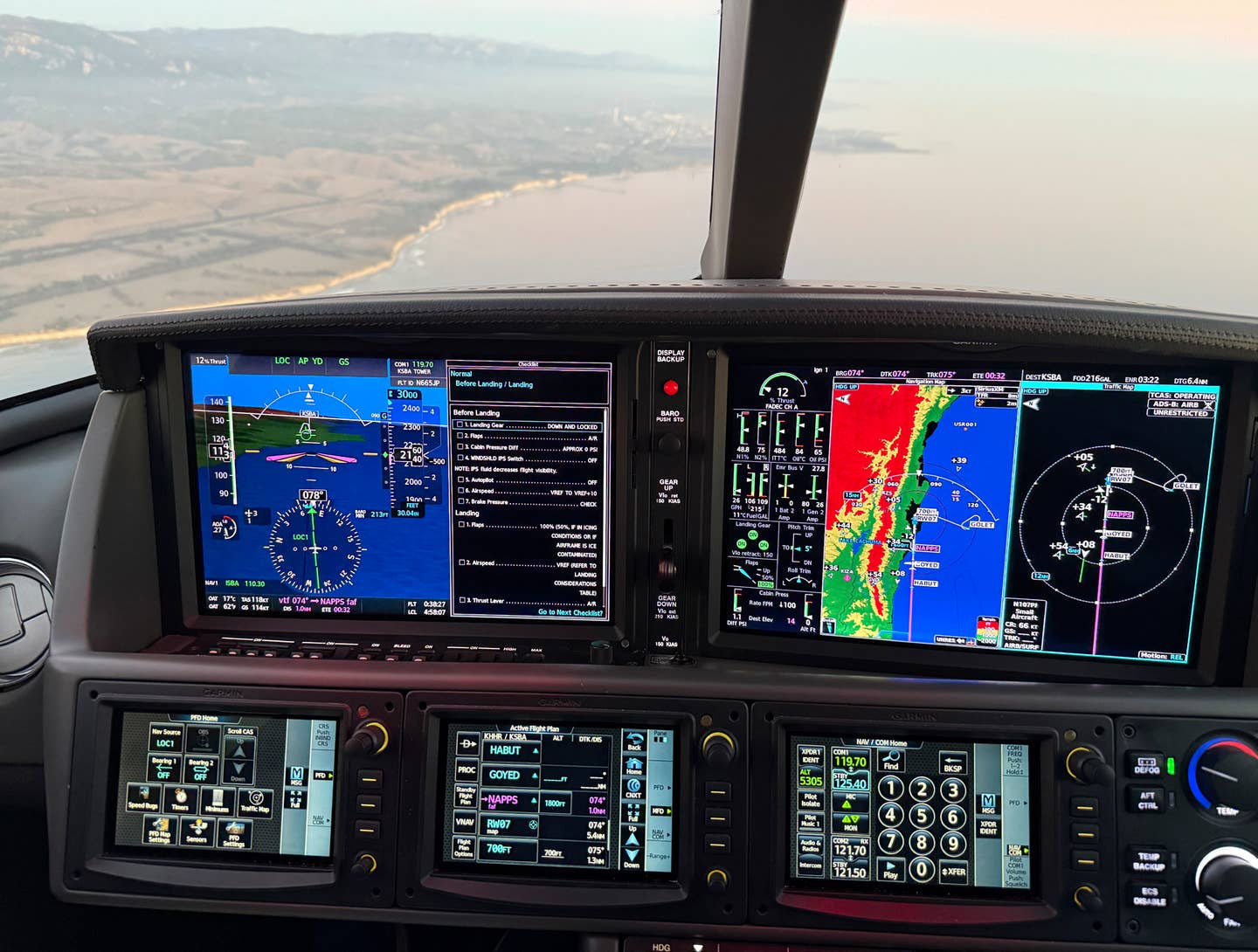
Ben doing his best to exude professionalism. Courtesy Ben Younger
I am different when someone is flying with me for the first time. Even more so if that person shows an interest in or fear of aviation. I feel responsible for my passenger’s continued fascination or for assuaging their anxiety. I do this by exhibiting a high level of proficiency from preflight through tie-down. I might as well have four stripes on my shoulders and travel everywhere with a small black roller case. With a witness in the left seat, I take on the role of a teacher with an inherent obligation to pass on the knowledge I’ve acquired. The byproduct is useful to both pilot and passenger: By going over the rules for others, it fortifies them in my mind and—ideally—prevents future transgressions.
This is in stark contrast to my style and manner when I am alone. I break rules with a bit more ease when I fly solo. For example, there is a line item in the preflight for my aircraft that requires me to check for water in the fuel tanks. I will not always sump the tanks if the airplane was in the hangar overnight with no rainfall and no new fuel taken. It feels like a fairly safe offense as far as they go, but it does break the rules. In this instance, the odds of the fuel being contaminated are slim to none. But the point is, you do your preflight. All of it. When you start picking and choosing because of context or circumstance, you open yourself up to a point of failure.
So long as the result is a safe flight, what’s the difference? I grew up in a religious household where the letter of the law superseded the spirit of the law. I never understood this until I became a pilot. When one obeys the spirit of the law but not the letter, one is fulfilling what the law intended, though not adhering to the literal wording. In the aviation world, the spirit of the law is of little importance. It’s about doctrine. There are items in a preflight one would never skip—checking flight controls, for example. But when you skip a less important item, you break the chain. The takeaway for your subconscious is not that the skipped item was carefully considered and a logical decision made to ignore it, but that the act of skipping an item was, in itself, permissible. That ain’t good.
Following the letter of the law in an airplane is a good thing and having a newbie in the cockpit seems to ensure that I will do that. Once the engine starts and we are taxiing, my radio calls are crisper with someone new in the right seat. I verbalize every step I take. I follow checklists. I think three steps ahead. Even my hand movements seem more deliberate. It’s a bit of a dog-and-pony show, I’ll admit. But in putting my passenger at ease, I reinforce good habits for myself.
In the early days of my flight training, Neil, my instructor, showed me the proper way to preflight a Piper Warrior. Those first few weeks of training must have driven him crazy. I dutifully checked the alternator belt for fraying, inspected the brake pads for wear, and ran my fingers over the prop blades like I was reading braille. I was closer to doing an annual than a preflight, and this technician with inspection authorization wasn’t signing off until he was sure the airplane was airworthy. It must have been tremendously annoying to him. But Neil never said a word, possibly because he was billing me for the time, but mostly because he was helping me build my own flight regimen, my own doctrine. He just smiled and told me I was doing a great job—and that, no, that was certainly not a crack in the cylinder head.
Read More from Ben Younger: Leading Edge
Recently, I started seeing someone—a woman named Kim—who is new to aviation and has a strong interest in it. When Kim and I began flying together, I was especially deliberate and practiced in all envelopes of flight, explaining everything in great detail to present as professional in my pilot duties as I knew how. Now, a few months down the line, some slack has slipped into my regimen. As usual, chronic problems in the cockpit begin with complacency.
Kim asks questions. Lots of them. The problem is, she remembers the answers. She pays close attention to everything I am doing in the airplane. When behaviors I initially described as crucial are overlooked weeks later, she quickly targets the discrepancy. She is a human crew-alerting system.
On a clear day this July, departing out of my home field, the ATIS told us that the winds were 290 at 5 knots—favoring Runway 33. We were heading east, so I made a left turn onto the taxiway for Runway 15. Immediately, Kim asked me why I was lining up on the wrong runway.
“I thought you said to never, ever take off with a tailwind?”
“Well, yes, but it’s only 5 knots, and we are much closer to this end of the runway. Plus, it’s more convenient for our direction of flight.”
As soon as the words left my mouth, I realized I was setting a terrible example. She had taken her first flight lesson only days before and was at her most impressionable. If she were the PIC and had made the same decision as me, I certainly would have some questions for her. Kim sat in silence for a beat. “So not never, ever, then?”
Act like the pilot you want to be at all times. With passengers. Without passengers. With your dog. While you make breakfast. While you sleep. Do this long enough, and perhaps one day, you will be that pilot.
Ben Younger is a TV and film writer/director, avid motorcyclist, and surfer—but it’s being a pilot that he treats as a second profession. Follow Ben Younger on Instagram: @thisisbenyounger.
This story appeared in the October 2020 issue of Flying Magazine

Sign-up for newsletters & special offers!
Get the latest FLYING stories & special offers delivered directly to your inbox






